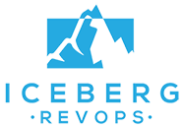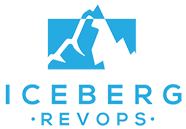It’s every sales leader’s worst fear: You’ve assured the C-suite you’re well on track to crush this quarter’s goal…
but the final numbers just came in … and you’re not even in the same zip code.
Your sales forecasts weren’t just off, they were worthless.
This scary scenario has become all too real for some. In their 2020 State of Sales Operations survey, research firm Gartner found that 55% of sales leaders and sellers reported not having high confidence in the accuracy of their forecasting.
Sales forecasting is the process of predicting an organization’s future sales performance. Accurate sales forecasts are pivotal to a successful sales program. Accurate forecasting enables sales leaders to set the right goals, catch problems early, better manage resources, and ultimately maximize profits.
Featured in this article: how to improve forecast accuracy with opportunity data.
- How do you accurately forecast sales?
- Using opportunity data to create more accurate sales forecasts
- How to set up opportunities in Salesforce
- Better opportunity data is within reach
How do you accurately forecast sales?
There are a number of different sales forecasting methodologies in use today. They vary in range from relying on historical benchmarks to calculating multivariable analyses to evaluating probabilities based on the average length of the sales cycle.
No single sales forecast formula or methodology is going to be the best option for every sales program. But regardless of which forecasting methodology or formula you use, you won’t create an accurate forecast if your calculations aren’t based on trustworthy data. In their 2020 survey, Gartner also identified poor data quality as one of the top factors contributing to inaccurate forecasts.
In order to create a reliable forecast, you need to start with reliable data.
Using opportunity data to create more accurate sales forecasts
Having good insight into the progress of your opportunities can be invaluable to an accurate sales forecast. In fact, the opportunity stage forecasting method is one of the most common forecasting methods in use today.
The basic premise behind the opportunity stage forecasting method is that the further along a deal is in the sales cycle, the more likely it is to close. Projected sales are calculated by multiplying the expected value of each deal by its probability of closing and summing up those amounts to obtain the final number.
In order for the opportunity stage forecasting method to be effective, you’ll need to have clearly defined opportunity stages with specific entry and exit criteria. You’ll also need to make sure deals are getting moved into ‘closed lost’ status in an appropriate time frame. Deals that have stalled out and been left to languish in an open status can throw off the accuracy of this method.
Using a powerful all-in-one CRM tool like Salesforce to track your opportunity data is much more efficient than relying on an unwieldy spreadsheet or a jumbled mess of disparate tools.
How to set up opportunities in Salesforce
The more you rely on guesswork, the less accuracy you’ll have in your forecasts. It should be your goal to reduce making subjective judgments for opportunities as much as possible. Setting up opportunities correctly in Salesforce will enable you to base your forecasts on trustworthy data instead of intuition.
Close Date
Close dates should be based on real historical data. How long does it usually take, on average, to close a deal? Be sure to consider the following:
Overall team average. What is the average time-to-close for your team overall?
By customer segment. For example, SMB vs. Enterprise customers.
By deal size. Do larger deals take longer to close than smaller deals?
Next Steps
Have a defined playbook for each of the steps in your sales process. This will help ensure consistency and adherence to best practices. For example:
What happens after an initial discovery call? Does certain information need to be captured? Which actions should be taken next?
How often should reps follow up? Should follow-up actions occur at specified time intervals? What about automated vs. manual follow-up?
What happens when a prospect goes dark? How long should a rep wait until making a ‘closed lost’ entry? How many contact attempts should be made?
‘Closed Lost’ Reasons
Create both a definitive picklist and a manual entry field to capture additional detail for why a deal was lost. For the picklist, consider including reasons like:
Contact went dark. The rep got ghosted and they don’t know why it happened.
Decided not to make a change. The prospect is no longer interested in a new solution, they’re just sticking with the status quo.
No budget. The prospect was unable to secure the necessary budget to move forward with the purchase.
Lost to a competitor. A competitor managed to win the business (any known information about who the competitor was or how they won should be noted).
Stages
Sales stages serve two functions: They show what has already happened with a deal, and they indicate how far the deal is from a successful close. It’s important to make sure these two leading indicators overlap. Here are some tips for setting up opportunity stages in Salesforce:
Stage name. Align each stage name to your sales methodology. In order to be effective, each stage needs to be meaningful to the sales process (i.e. Pipeline, Commit, Upside, Closed).
Entry criteria. The entry criteria should include about 2-4 binary yes or no questions. In order to define effective entry criteria, you’ll need to identify specific milestones prior to each stage.
Actions and deliverables. Clearly define key actions and deliverables for each stage. Unclear definitions lead to poor quality data.
Exit criteria. Identify the milestones used to progress from each stage. Exit criteria should include about 2-4 binary yes or no questions.
Exit criteria for one stage aren’t always the same as entry criteria for another. Many opportunities will progress from one stage to the next, but sometimes opportunities will meet exit criteria for one stage but not entry criteria for the next. These opportunities progress to ‘closed lost’ status.
Better opportunity data is within reach
An accurate sales forecast starts with trustworthy data. If you’re wondering how to improve forecast accuracy, first improve the quality of your data. Correctly configuring close dates, next steps, ‘closed lost’ reasons, and stages on your Salesforce opportunities will help you get the data you need for reliable forecasting.
Stuck on how to correctly set up or fix the opportunity data in your CRM? Iceberg’s expert team can help you configure Salesforce opportunities to capture the data you need to create better sales forecasts. Contact us today to learn more.


